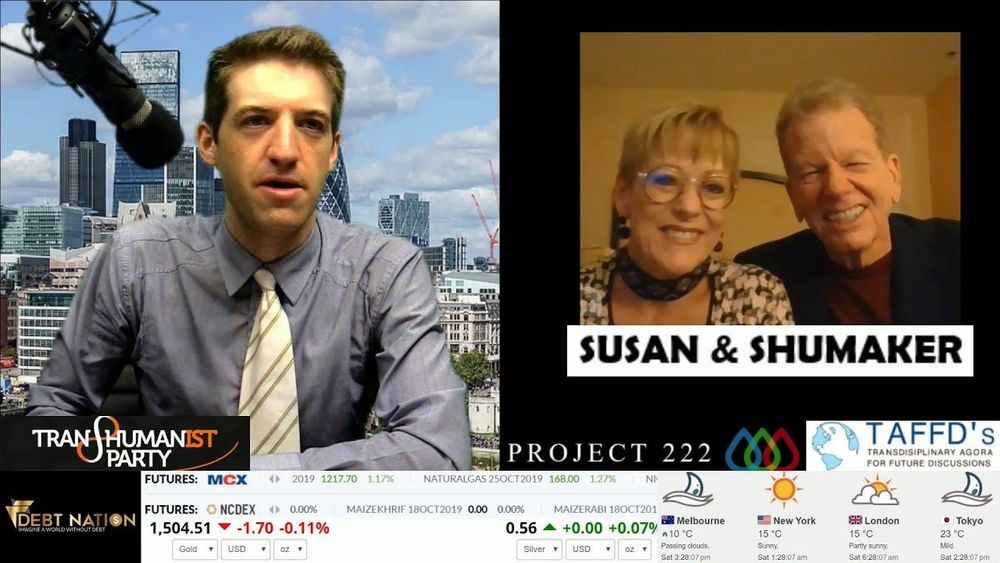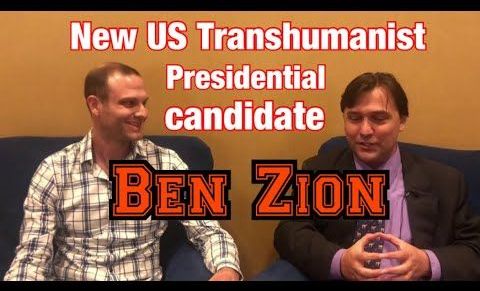https://www.youtube.com/watch?v=rRewUL82S4A&feature=share
WANT TO SEE MORE?
LIKE & SUBSCRIBE & JOIN OUR DEBT NATION FACEBOOK: https://bit.ly/30yEGGo
WANT TO SEE MORE?
LIKE & SUBSCRIBE & JOIN OUR DEBT NATION YOUTUBE:
HERE: https://bit.ly/2kp4vbB

https://www.youtube.com/watch?v=rRewUL82S4A&feature=share
WANT TO SEE MORE?
LIKE & SUBSCRIBE & JOIN OUR DEBT NATION FACEBOOK: https://bit.ly/30yEGGo
WANT TO SEE MORE?
LIKE & SUBSCRIBE & JOIN OUR DEBT NATION YOUTUBE:
HERE: https://bit.ly/2kp4vbB

My mission is to drastically improve your life by helping you break bad habits, build and keep new healthy habits to make you the best version of yourself. I read the books and do all the research and share my findings with you!
This video is me (Brent Nally) interviewing Transhumanist Party US Presidential Candidate Ben Zion on October 3, 2019 at RAADFest at the Westgate Hotel & Casino.

Live forever smile
“Success Is A Choice” — Motivational Song — DJ Clayvis.
For more information about scheduling Clay Clark to speak to your organization visit: www.makeyourlifeepic.com or call for more information today at 918−851−6920.
Continue reading “‘Success Is A Choice’ — DJ Clayvis — Motivational Rap Song — Napoleon Hill” »

Live forever my dear friend with me and keep me alive with you! Don’t be die and leave me alone 😢😭.
Forever Young by Alphaville!
Official video~
Best quality~.

https://www.youtube.com/watch?v=BqNZPUfau0U&feature=share
At RAAD Fest in Las Vegas on October 6, 2019, Gennady Stolyarov II, Chairman of the U.S. Transhumanist Party / Transhuman Party (USTP), announces the results of the 2019 USTP Electronic Primary for President of the United States, and introduces the winner of the Electronic Primary and the USTP-endorsed candidate for President of the United States in 2020, Johannon Ben Zion.
See the detailed results here: https://transhumanist-party.org/2019/10/02/ustp-2019-electronic-primary-results/
Two University of Hawaiʻi at Mānoa researchers have identified and corrected a subtle error that was made when applying Einstein’s equations to model the growth of the universe.
Physicists usually assume that a cosmologically large system, such as the universe, is insensitive to details of the small systems contained within it. Kevin Croker, a postdoctoral research fellow in the Department of Physics and Astronomy, and Joel Weiner, a faculty member in the Department of Mathematics, have shown that this assumption can fail for the compact objects that remain after the collapse and explosion of very large stars.
“For 80 years, we’ve generally operated under the assumption that the universe, in broad strokes, was not affected by the particular details of any small region,” said Croker. “It is now clear that general relativity can observably connect collapsed stars—regions the size of Honolulu—to the behavior of the universe as a whole, over a thousand billion billion times larger.”
 The SENS Research Foundation science team is taking the next step in their work on moving mitochondrial genes into the cell nucleus, a process called allotopic expression. Having proven that they can carry out this task with the ATP8 gene in cells, they are now aiming at proof of principle in mice. This will require the production of transgenic mice, using a novel technology funded by the SENS Research Foundation called the maximally modifiable mouse. This mitochondrial project is being crowdfunded at Lifespan.io: you, I, and everyone else can contribute to advancing the state of the art one step further towards eliminating mitochondrial DNA damage as a cause of aging.
The SENS Research Foundation science team is taking the next step in their work on moving mitochondrial genes into the cell nucleus, a process called allotopic expression. Having proven that they can carry out this task with the ATP8 gene in cells, they are now aiming at proof of principle in mice. This will require the production of transgenic mice, using a novel technology funded by the SENS Research Foundation called the maximally modifiable mouse. This mitochondrial project is being crowdfunded at Lifespan.io: you, I, and everyone else can contribute to advancing the state of the art one step further towards eliminating mitochondrial DNA damage as a cause of aging.
Mitochondria are the power plants of the cell, a herd of organelles descended from ancient symbiotic bacteria. They reproduce by replication and are recycled when damaged by cellular maintenance processes. Mitochondria carry the remnant of the original bacterial DNA, encoding thirteen genes vital to the process by which mitochondria package chemical energy store molecules. Unfortunately mitochondria generate reactive molecules as a byproduct of their operation, and this DNA is less well protected than the DNA of the cell nucleus. Some forms of damage to this DNA can break mitochondrial function in ways that allow the broken mitochondria to outcompete their functional peers, leading to dysfunctional cells that export massive quantities of damaging, oxidative molecules into the surrounding tissue. This contributes to conditions such as atherosclerosis, via the production of significant amounts of oxidized cholesterol in the body.
Allotopic expression of mitochondrial genes will work around this issue by providing a backup source of the proteins necessary to mitochondrial function. It has been demonstrated to work for ND4, and that project has been running for some years at Gensight Biologics to produce a therapy for inherited conditions that involve mutation of that gene. This work must expand, however, to encompass all thirteen genes of interest. So lend a hand, and help the SENS Research Foundation team take the next step forward in this process.
Flushing harmful zombie senescent cells from the body that have become old, fatigued and have ceased to divide has become one of the more prominent proposals in the anti-aging sphere. The hypothesis has generated a stream of animal data to support the theory, and now the Mayo Clinic has results from a human study that suggests they have found drugs that can do the same.
While the main goal of the Phase I trail was not to show the effects of reducing senescent cells in the body the researchers were eager to show that the anti-aging senolytics that were tested in animal studies can work the same way in humans as “so far, there has been no direct demonstration of senescent cell clearance by senolytic drugs in peer-reviewed published human clinical trials,” the authors wrote in EBioMedicine, despite the publication of the first human data in January.
Dasatinib and quercetin were given to 9 patients with diabetes related chronic kidney disease for 3 days in this trial. The drugs cleared participants systems in a matter of a few days, but the effects persisted and the authors reported, “Key markers of senescent cell burden were decreased in adipose tissue and skin biopsied from subjects 11 days after completing the 3-day course of D + Q, as were key circulating SASP factors, compared to before administration of these senolytic drugs.”
EVANSTON, Ill. — A new Northwestern University study finds that despite human’s close genetic relationship to apes, the human gut microbiome is more similar to that of Old World monkeys like baboons than to that of apes like chimpanzees.
These results suggest that human ecology has had a stronger impact in shaping the human gut microbiome than genetic relationships. The results also suggest the human gut microbiome may have unique characteristics compared to other primates, including increased flexibility.
“Understanding what factors shaped the human gut microbiome over evolutionary time can help us understand how gut microbes may have influenced adaptation and evolution in our ancestors and how they interact with our biology and health today,” said Katherine Amato, lead author of the study and assistant professor of anthropology in the Weinberg College of Arts and Sciences at Northwestern.
